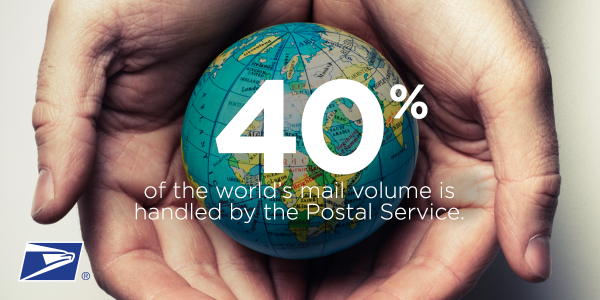With the
increase of online shopping came the increase in package deliveries. USPS and
UPS accumulated many angry customers when their delivery service could not
perform well enough to deliver packages on time.
 This year the U.S.
Postal Service (USPS) predicts an 8% increase in package deliveries, bringing their
total package delivery amount to 4 billion. Postmaster General Patrick Donahoe
claims that these package levels can increase up to 12%-14% from last year.[1]
This year the U.S.
Postal Service (USPS) predicts an 8% increase in package deliveries, bringing their
total package delivery amount to 4 billion. Postmaster General Patrick Donahoe
claims that these package levels can increase up to 12%-14% from last year.[1]
To accommodate
this increase USPS will eliminate Saturday mail delivery to cut costs and
devote funds to trucks and manpower for package delivery.[2]
The biggest pushback has come from Congress, concerned about small businesses,
rural communities, and the elderly who lean on paper mail deliveries for
commerce. The Washington post reports that Saturday will be cut from the mail
delivery schedule and a seven day package delivery service will run from
November 17 through Christmas Day.[3]
The downside is that this may cause 7,500 USPS employees to lose their jobs.
Along with a new
delivery schedule USPS has offered shipping guidelines to their customers. John
Budzynski, USPS Service Consumer Advocate, claims “the key to holiday shipping
is being prepared and starting early.” [4]
I understand Budzynski’s attempt to ease the
process by reaching out to customers, however I believe that the solution to
delivering packages on time is not the responsibility of the consumer.
Last year UPS
was also slammed by the increase in delivery levels, claiming their late
deliveries were due to “compressed peak season coupled with an unprecedented
level of online shopping that included a surge of last-minute orders”
 To solve their
problems UPS will hire 90,000-95,000 seasonal employees who have the
opportunity for long-term employment.[5]
This is a 10,000-person increase from their reactionary hiring from 2013. In
their time of need 80,000 seasonal employees were hired, which was more than
the 30,000 extra hands they predicted[6].
Additionally, for business deliveries UPS is prepared to charge a premium if a
late surge overwhelms their delivery process. They are plan to go so far as to
deny major retailers if their delivery is set too late[7].
To solve their
problems UPS will hire 90,000-95,000 seasonal employees who have the
opportunity for long-term employment.[5]
This is a 10,000-person increase from their reactionary hiring from 2013. In
their time of need 80,000 seasonal employees were hired, which was more than
the 30,000 extra hands they predicted[6].
Additionally, for business deliveries UPS is prepared to charge a premium if a
late surge overwhelms their delivery process. They are plan to go so far as to
deny major retailers if their delivery is set too late[7].
Both USPS and
UPS are dealing with the indirect effects of a growing global community made
possible by technological advancements, good problem? In a business market
without competition I would suggest that USPS and UPS band together to solve
their similar issue. USPS is prepared to cut 7,500 employees. Perhaps these
individuals could make the move to the UPS taskforce. Another solution in a
perfect world would be for UPS to contract USPS for their deliveries to rural
communities. This would boost USPS’ revenue, which suffered a great loss, as
their profit is generated solely through postage stamps, and allow UPS to get
their deliveries out on time to hard to reach communities.
But alas, we do
not live in a world without competitive markets, nor do I want to. USPS claims
that this is their season[8]
and UPS claims that they love logistics.[9]
My question is, is there a conceivable way for USPS and UPS to band together for
the months of November and December to create a much more efficient supply
chain delivery system that can bolster both company’s profits and reduce late
deliveries?
No comments:
Post a Comment
Note: Only a member of this blog may post a comment.